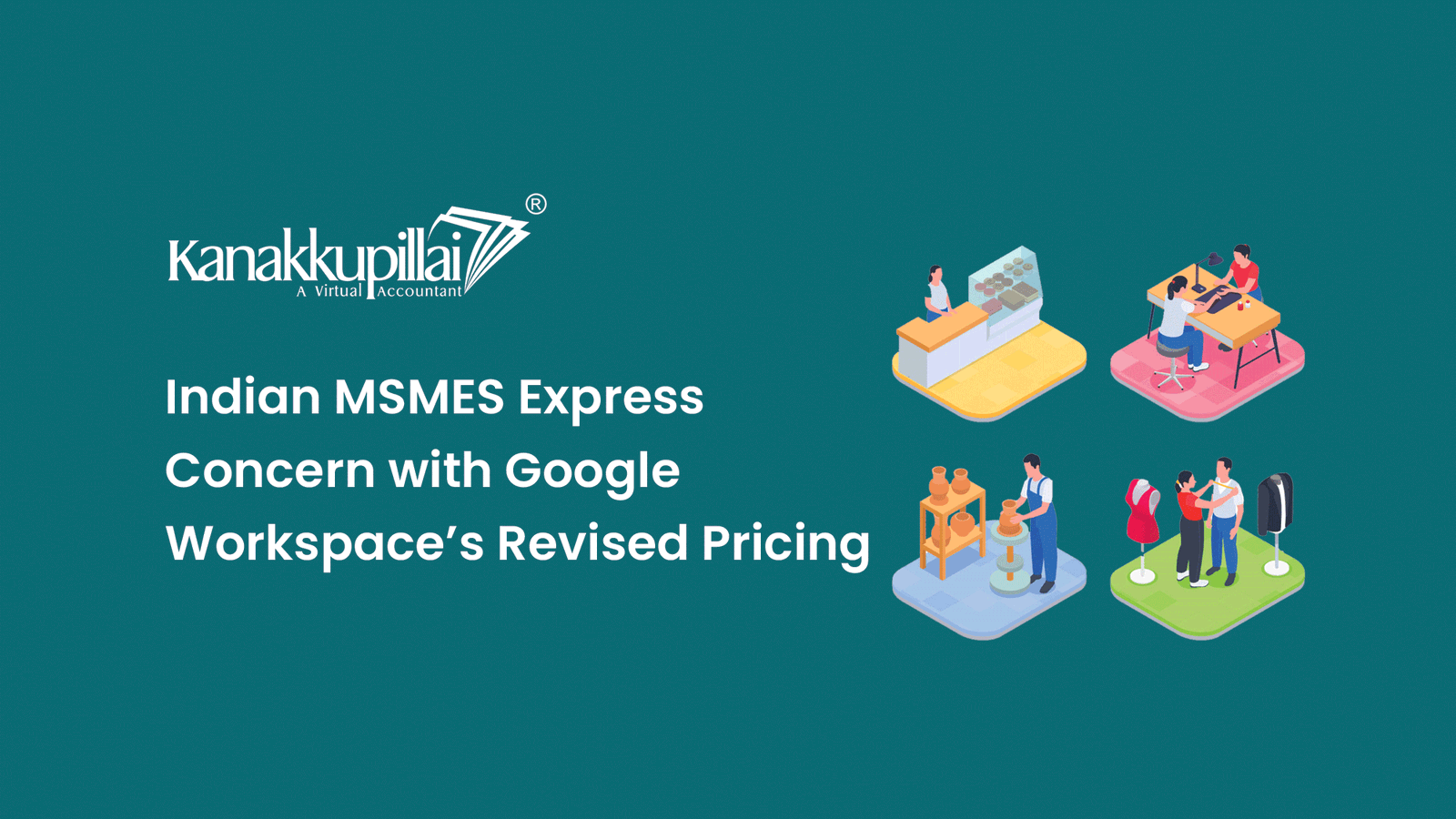Several Indian Micro, Small, and Medium Enterprises (MSMEs) have expressed concern about rising expenses following a recent modification to pricing for Google Workspace solutions. In an open letter to India’s senior management on August 17, one of the businesses claimed that such pricing practices would add an extra Rs. 2,000 to Rs. 5,000 crores in annual costs for Indian MSMEs for services they would never utilize.
Sanjay Gupta, the head of Google India, Mayoori Kango, the head of industry—agency partnerships, and Amit Kumar, director of sales for Google Cloud India, were the recipients of the letter from Synersoft Technologies. Additionally, copies of the letter were forwarded to the Indian Competition Commission, as well as to various ministries, including MSME, IT and broadcasting, science and technology, industry and commerce, finance, and other relevant recipients.
The CEO of Synersoft Technologies has explained the myth by stating that, in the past, each enterprise user would pay approximately Rs. 2,500 per annum for the G-Suite Basic 30 GB storage space plan. For example, if two senior team members require more storage capacity, only those two individuals can upgrade their plans to receive 100 GB of extra space for a fee of Rs. 1,300 per user per year.
However, they were informed of a new pricing strategy as of June.
Then, Google announced that G-Suite would be rebranded as Google Workspace, accompanied by specified policy adjustmWe’ve We’ve been informed that the additional 100 GB storage is no longer accessible” The “Business St”ndard” category, which has a minimum storage requirement of 2 TB and costs Rs. 10,000 per user yearly, must be upgraded. They also stated that you must upgrade all of your accounts to 2 TB storage if you require more than 30 GB in a single account, according to Shah.
It was also stated that there is a force to upgrade all 50 accounts (of staff) to a 2 TB storage at a 400% greater cost, because I require 130 GB for a few individuals. From Rs. 1,20,000, there is a yearly outflow of Rs. 5,00,000.
Google understands that small companies can’t have data of 100 TB (50 users with 2 TB each), and won’t be able to use or utilize it. This is what was stated by an MSME registration. Therefore, it does not need to provide 100 TB on its cloud, and it can still charge for 100 TB, according to Shah.
It was also stated that, in the past, the cost of using Google email accounted for approximately 7 to 10 percent of the overall amount spent on digital operations expenses, including Software as a Service (SaaS) subscriptions, internet costs, and other fees. According to experts, the cost of Google email accounts now accounts for up to 30% of total digital spending due to the pricing shift and the necessity to upgrade it for all employees.
In case someone wishes to download data and move to another provider, Google has also limited the amount of data that can be transferred at once, according to an expert from Synersoft.
The process of exporting email data from Google Workspace is complicated. The majority of MSMEs cannot comprehend them, and their only option is to download all emails sent to the new service provider from Google. Google has a rule that I can’t simultaneously download all of my emails to another service provider if I wish to. Every hour, a set quantity of emails can be sent before waiting for the next cycle. It requires days. And now, emails have stopped.
Global technology MNCs typically craft a specific strategy for India that includes offering goods at the most affordable prices and services, initially either free or at a very minimal charge, with several add-on facilities, said Praveen Khandelwal, Secretary General of the Confederation of All India Traders, or CAIT. Once customers or businesses become accustomed to their services and raise costs, these businesses initially use AI and ML to track the data and purchasing power of every individual or business using their services. Later, however, as users grow accustomed to these services, they start charging exorbitant fees, making it impossible for users to refuse to use them.
Google provides customized services.
Based on specific inquiries, a Google representative clarified that, with customers ‘ specific collaboration and security needs in mind, we have been assisting our clients with transitioning to our new editions since introducing Google Workspace in 2020. When switching to Google Workspace solutions, most of our customers will experience little to no change, and we are assisting all of our customers in making the switch.
The representative also added that from smaller businesses wishing to make quick, self-service purchases to larger enterprises with more sophisticated requirements, Google Workspace offers customized alternatives that align with how clients want to acquire our integrated suite of apps. Additionally, they are heavily investing in GWorkspace’s value for all customers, including those in consumer, enterprise, SMB, non-profit, education, and other sectors.
Conclusion
In India, any business or enterprise that falls under the category of micro, small, or medium-sized enterprises (MSMEs) can apply for MSME registration. The eligibility criteria for MSME registration are based on the investment in plant and machinery or equipment for manufacturing or service enterprises. MSME registration provides several benefits to businesses, including easy access to credit, tax exemptions, and government subsidies.





